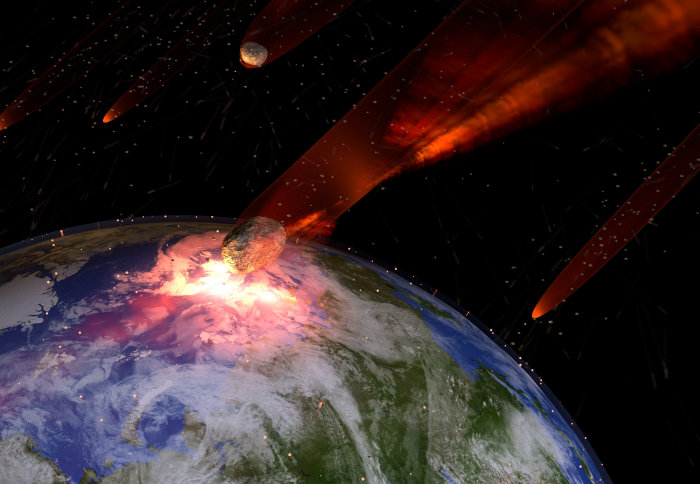'Surprisingly fast' recovery of life at dinosaur-killing asteroid impact site

Within 30,000 years of impact, Mexico’s Chicxulub crater fostered a thriving ecosystem - a much faster recovery than many sites around the world.
The asteroid that created the Chicxulub crater 66 million years ago triggered a mass extinction that killed more than three quarters of life on Earth and wiped out the dinosaurs.
Scientists previously found that the recovery at sites close to the crater was slower, and thought this might be due to the toxic chemicals released by the impact - but the latest findings, published in Nature, undermine this.
"The asteroid that killed the dinosaurs rather ironically left an Eden for further life to thrive." - Professor Joanna Morgan
In 2016, a team of researchers, including scientists from the University of Texas at Austin and Imperial College London, drilled into the 180-km-wide crater and brought up 800 metres of rocks. These harboured geological scars from the impact as well as thousands of microscopic fossils.
Using the layers of sediment to ‘date’ the rock and work out when the fossils appeared, they found the first microorganisms appeared two to three years after impact. They also found burrows made by small shrimp or worms, showing the rapid shift in types of life from the microscopic to much larger life forms.
By 30,000 years after impact, the asteroid’s ‘ground zero’ housed a thriving ecosystem, including microscopic plants that supported a diverse community of microfossils in the surface waters and on the seafloor.
In contrast, other areas around the world, including the North Atlantic and other areas of the Gulf of Mexico, took up to 300,000 years to recover in a similar manner.
Life appeared in the crater within a few years of impact, which is really fast; surprisingly fast. Dr Chris Lowery University of Texas Institute for Geophysics (UTIG)
Co-author Professor Joanna Morgan, from Imperial’s Department of Earth Science & Engineering, said: “The asteroid that killed the dinosaurs rather ironically left an Eden for further life to thrive.”
The speed at which Chicxulub recovered suggests that life recovery is more dependent on local factors than previously thought. The authors say this could have implications for how well environments altered by climate change could recover in future.
Lead author Dr Chris Lowery, from the University of Texas Institute for Geophysics (UTIG), said: “Life appeared in the crater within a few years of impact, which is really fast; surprisingly fast.”
So why did life recover so much faster in Chicxulub than other impacts? Professor Morgan said it might have to do with the crater’s asymmetry and proximity to the Gulf of Mexico: Chicxulub’s northeastern edge was deeper, allowing life and nutrient-carrying ocean waters to rapidly return and cover the crater.
The expedition was funded by European Consortium for Ocean Research Drilling (ECORD) and International Continental Drilling Program (ICDP).
“Rapid recovery of life at ground zero of the end-Cretaceous mass extinction” by Christopher M. Lowery et al, published 30 May 2018 in Nature.
Image credit: Shutterstock/AuntSpray
Article text (excluding photos or graphics) © Imperial College London.
Photos and graphics subject to third party copyright used with permission or © Imperial College London.
Reporter
Caroline Brogan
Communications Division